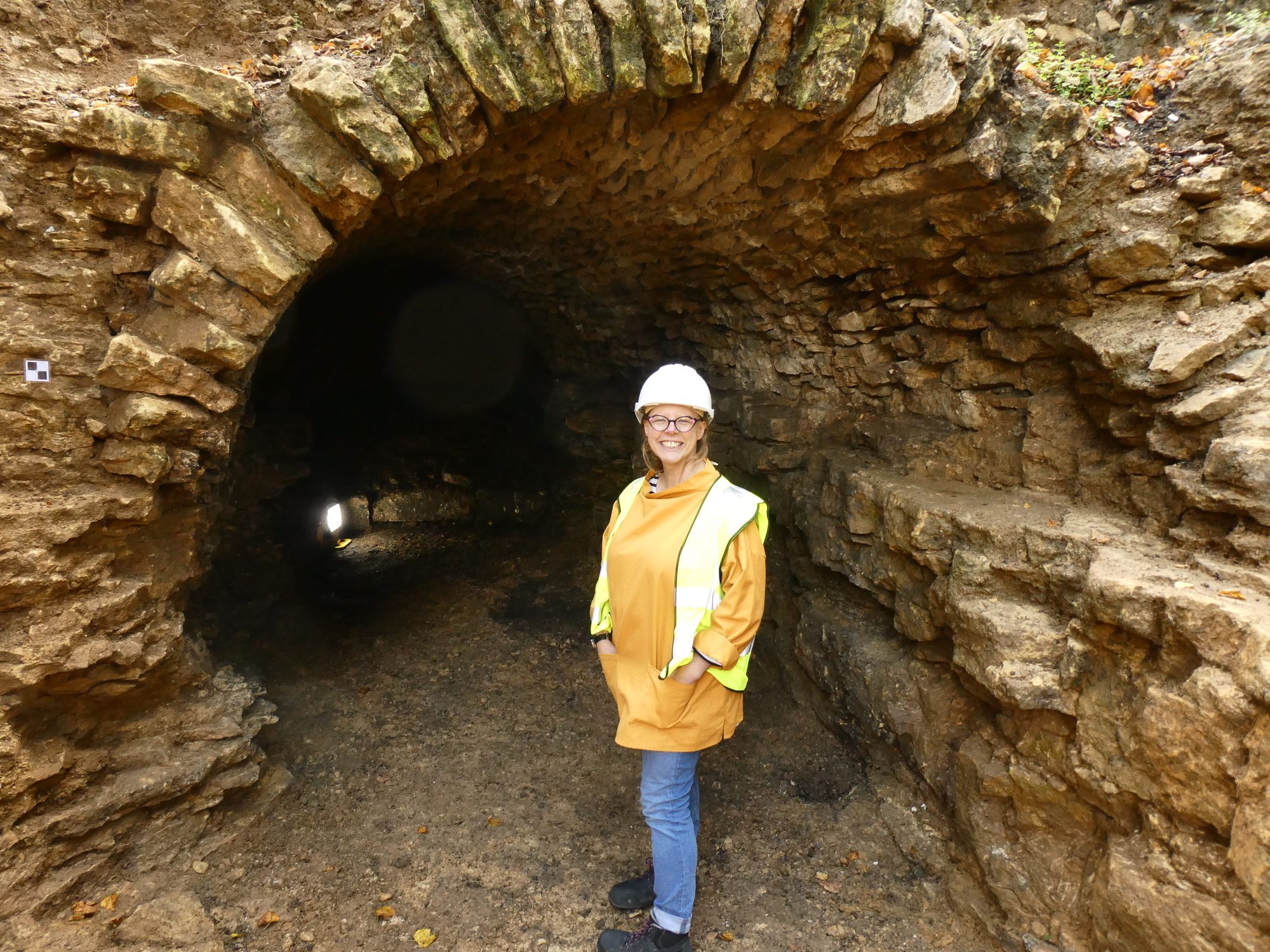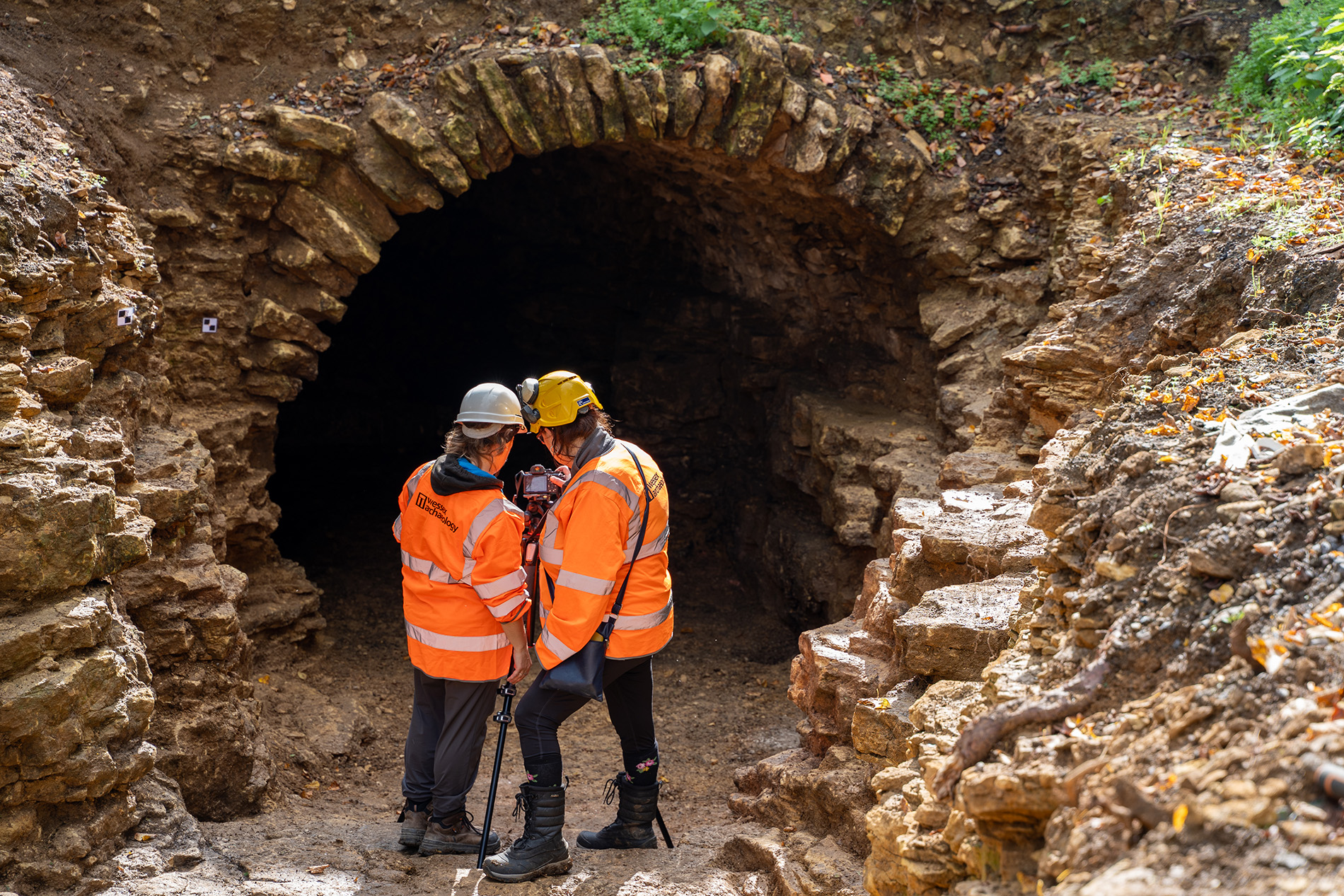For the first time in over 100 years, William Beckford’s hidden Grotto Tunnel is publicly visible again. A team of archaeologists and building experts have uncovered the original steps and retaining walls, along with various historic objects including clay pipes smoked by the stonemasons who first built the Grotto in the 1820s.

It is believed that at some point after Beckford’s death, the Tower-end of the Grotto was filled in, leaving the other end open to become what appears to have been a rubbish dump for the then large Victoria villa Hamilton House (on the site where the modern apartment block of Hamilton House now stands). Emery Brothers Ltd and Wessex Archaeology began the full excavation of the Grotto in September 2023, uncovering several historical objects in the process. While the existence of the subterranean Grotto was known, nobody knew exactly how large the interior was. The excavations, involving the removal of tonnes of soil and rock, have uncovered a cavity seven meters long, featuring deliberately naturalistic rock work walls in-keeping with the highly-fashionable grotto aesthetic of the time.
Once uncovered, experts from Wessex Archaeology created a 3D photogrammetric model of the grotto tunnel. Capturing and processing hundreds of overlapping digital photographs that were correlated with targets on the structure using survey equipment, ensured the model was accurate.
Explore this interactive 3D photogrammetry model of the grotto tunnel created by Wessex Archaeology which can be accessed here.
Some of the artefacts identified so far include:
- Clay tobacco pipes with historic mortar on them, dating to the 19th century, perhaps smoked by the stonemasons who built the Grotto
- Late 19th / early 20th-century blacking bottles (earthenware ceramics used for holding thick liquids such as shoe polish, blacking for stoves and horse harness polish)
- Various historic medicine bottles and beer bottles
- Broken porcelain from a 19th century dinner service
A full archaeological report is to follow.
Patrizia Ribul, Director of Museums at Bath Preservation Trust and the new lead for the Beckford Tower project said: “The Grotto Tunnel is an integral part of the designed landscape of Beckford’s Tower. These new findings reconfirm many of the things that we already knew about William Beckford, such as his attention to detail in design, and his enthusiasm for nature. The Grotto also serves as a reminder of Beckford’s enormous wealth, gained through his involvement with the transatlantic slave trade, which enabled him to devote so much of his time to designing and curating his Tower and pleasure gardens, including the colonial acquisition of exotic specimen trees and shrubs. We look forward to opening up the Grotto to the public for the first time in March 2024, with thanks to the support of The National Lottery Heritage Fund, Historic England and our other generous supporters. I would also like to acknowledge the involvement and hard work of the following organisations: Thomas Ford & Partners (architects); The Morton Partnership (structural engineers); Qoda Consulting (M&E Consultants); Greenwood Projects (PQS); and Biodiversity by Design (Ecology).”
Dr Amy Frost, Senior Curator at Bath Preservation Trust and a leading expert on William Beckford said: “Grottos in English gardens were very fashionable in the Georgian period. Beckford’s father created grottos at the Fonthill estate in Wiltshire, which William then added to, before going on to create his own here in Bath in the 1820s. Unlike many of the ornate grottos of the time which often featured mosaic floors, Beckford was much more interested in a more naturalistic idea of landscape design, and our findings back this up – at first glance the Grotto looks hacked out of bedrock, but upon closer inspection it has been very cleverly cut and shaped. Having only ever seen one partial historic drawing of the Grotto steps prior to the excavation, uncovering the extent of them has been a wonderful surprise for us all – and a real career highlight for me.”
Marek Lewcun, Archaeologist at Wessex Archaeology, said: “Excavation of Beckford’s Tower grotto tunnel began with the removal of three metres of rock and soil, after which we carefully revealed the expertly crafted, naturalistic structure of the grotto. The rock-cut steps that descend into the grotto wind steadily downwards, with the curving rock face hiding the entrance to the tunnel, heightening the sense of mystery for anyone visiting. Near the tunnel entrance, we exposed a series of curved and recessed ledges – the purpose of which is unclear and something we hope to learn more about. It has been a privilege to be a part of the project to excavate and restore the grotto tunnel, which will allow the museum’s visitors to see it once again after 100 years of obscurity.”
Beckford’s Tower is an historic building currently on the “Heritage at Risk” register. Essential capital works – led by Emery Brothers Ltd and supported by grants from The National Lottery Heritage Fund and Historic England amongst other funders – will help to preserve and maintain this unique heritage attraction for the future. When the Tower reopens in March 2024, the Grotto will be accessible to visitors as part of their Museum experience.



